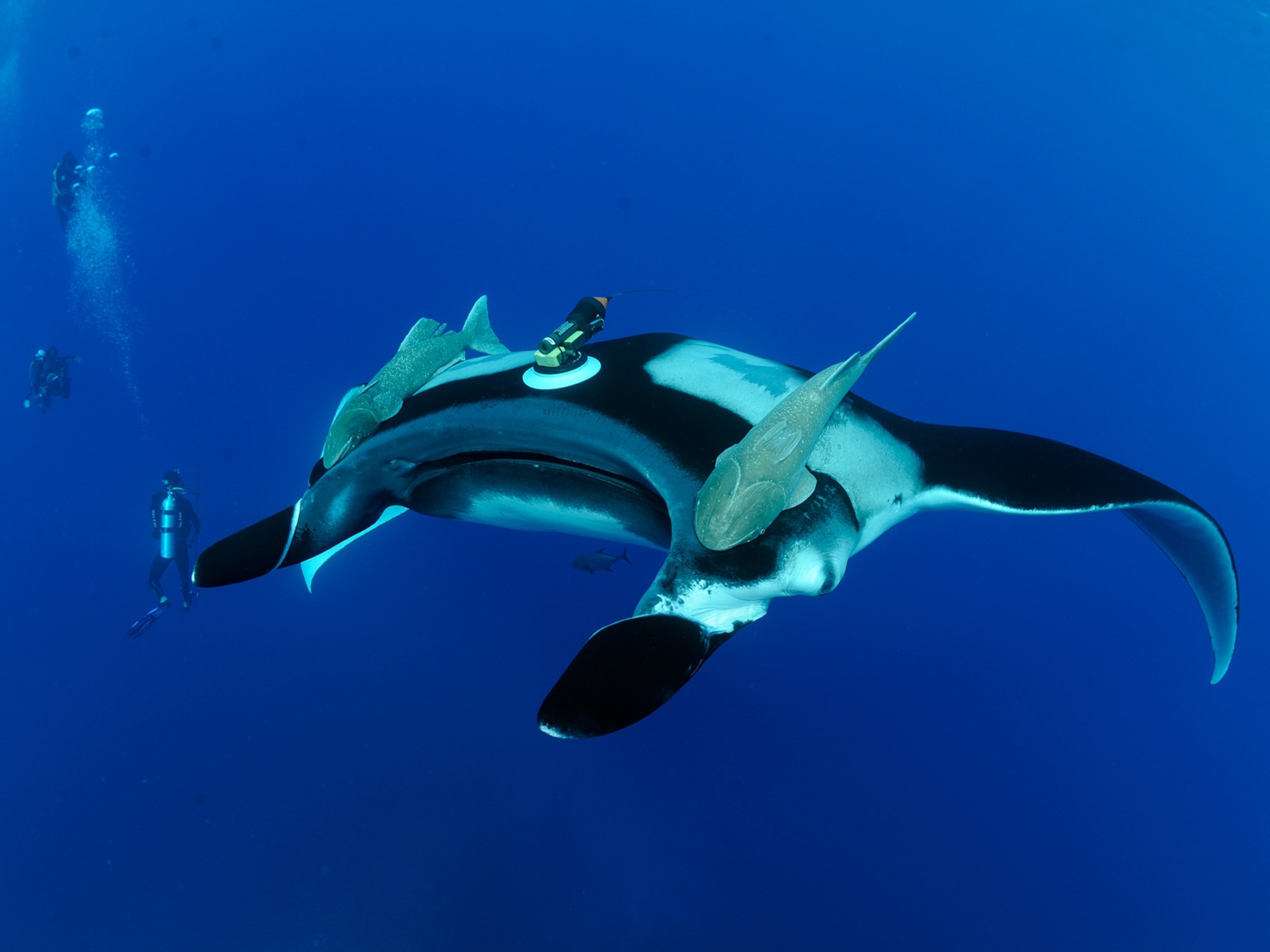What's the Giant, Slimy Worm That Horrified the Internet?
The animal, filmed last week by a Taiwanese fisherman, is a ribbon worm—part of an unusual group of marine creatures that can swallow prey whole.
The ocean serves up all kinds of weirdness—from giant fish that spawn sea serpent myths to blue jellyfish that coat beaches. But the marine realm's latest offering is not for the faint of heart.
Fishermen in Taiwan recently spotted a giant, bright-green worm waggling what looks like a pink tongue and posted a video of it online last week. The footage has since gone viral.
The creature in question is a type of nemertean, or ribbon worm, called Lineus fuscoviridis, says Jon Norenburg, chair of invertebrate zoology at the Smithsonian's Natural History Museum in Washington, D.C.
This harmless species ranges from Japan to the Philippines and is fairly common in tropical coastal waters, he says. The animal in the video "probably crawled out of something brought out of the water," Norenburg explains, like a porous rock, a large clump of seaweed, or even an old tire. (Read about the "devil worm," the deepest-living animal found.)
The Lineus group is known for its large members, says John McDermott, an invertebrate zoologist at Franklin and Marshall College in Lancaster, Pennsylvania. "This type of worm could be two meters, about six feet, long," he says.
There are about 1,100 species of ribbon worm in the world, and most, but not all, live in the ocean.
Sticky Situation
So what about that pink thing writhing around on the dock in the video?
It's a proboscis, one of the defining features of this group of ribbon worms.
The tongue-like organ can shoot out to capture prey—and in certain species, it's sticky and will entangle a clam, sea slug, or another worm. The ribbon worm will then engulf its victim whole.
In some instances, Norenburg says, ribbon worms can swallow sea slugs three to four times fatter than themselves. "These worms are even better than pythons in this regard."
Some species anesthetize their prey so that the worm can then eat the immobilized animal from the inside out, McDermott explains. Yet another group of ribbon worms inject poison into their victims with a modified proboscis.(Read about other things that marine worms eat, including bone.)
Last Defense
As for the proboscis in the video, it was probably part of a last-ditch defense by the animal after sensing it was on dry land rather than in the ocean, says Norenburg.
This worm-out-of-water wouldn't last long on land. They move with the help of a mucus coating, but they need seawater as a lubricant, Norenburg explains.
You May Also Like
Go Further
Animals
- How can we protect grizzlies from their biggest threat—trains?How can we protect grizzlies from their biggest threat—trains?
- This ‘saber-toothed’ salmon wasn’t quite what we thoughtThis ‘saber-toothed’ salmon wasn’t quite what we thought
- Why this rhino-zebra friendship makes perfect senseWhy this rhino-zebra friendship makes perfect sense
- When did bioluminescence evolve? It’s older than we thought.When did bioluminescence evolve? It’s older than we thought.
- Soy, skim … spider. Are any of these technically milk?Soy, skim … spider. Are any of these technically milk?
Environment
- Are the Great Lakes the key to solving America’s emissions conundrum?Are the Great Lakes the key to solving America’s emissions conundrum?
- The world’s historic sites face climate change. Can Petra lead the way?The world’s historic sites face climate change. Can Petra lead the way?
- This pristine piece of the Amazon shows nature’s resilienceThis pristine piece of the Amazon shows nature’s resilience
- Listen to 30 years of climate change transformed into haunting musicListen to 30 years of climate change transformed into haunting music
History & Culture
- Meet the original members of the tortured poets departmentMeet the original members of the tortured poets department
- Séances at the White House? Why these first ladies turned to the occultSéances at the White House? Why these first ladies turned to the occult
- Gambling is everywhere now. When is that a problem?Gambling is everywhere now. When is that a problem?
- Beauty is pain—at least it was in 17th-century SpainBeauty is pain—at least it was in 17th-century Spain
Science
- Here's how astronomers found one of the rarest phenomenons in spaceHere's how astronomers found one of the rarest phenomenons in space
- Not an extrovert or introvert? There’s a word for that.Not an extrovert or introvert? There’s a word for that.
- NASA has a plan to clean up space junk—but is going green enough?NASA has a plan to clean up space junk—but is going green enough?
- Soy, skim … spider. Are any of these technically milk?Soy, skim … spider. Are any of these technically milk?
Travel
- This tomb diver was among the first to swim beneath a pyramidThis tomb diver was among the first to swim beneath a pyramid
- Dina Macki on Omani cuisine and Zanzibari flavoursDina Macki on Omani cuisine and Zanzibari flavours
- How to see Mexico's Baja California beyond the beachesHow to see Mexico's Baja California beyond the beaches
- Could Mexico's Chepe Express be the ultimate slow rail adventure?Could Mexico's Chepe Express be the ultimate slow rail adventure?




